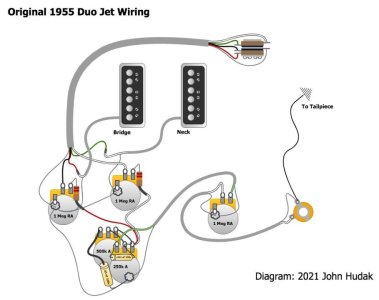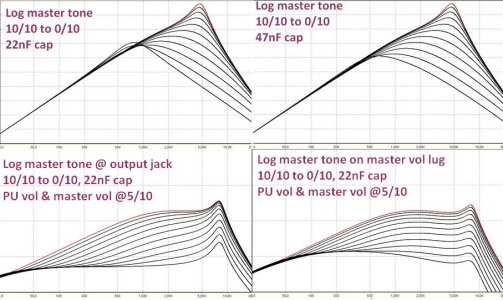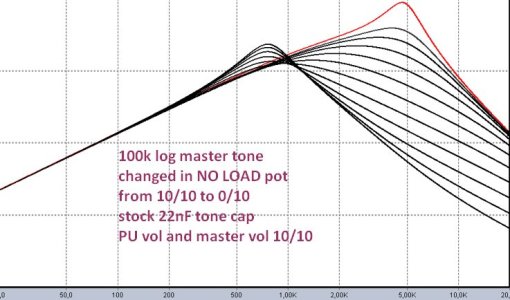I'm hoping to get some help evening out the taper of the Tone pot on my Gretsch guitar. My issue is that almost all of the "action" occurs in the last quarter or so of the rotation, e.g. 0-3. The rest is very gradual. Any suggestions? Different taper and/or pot value? Different capacitor? For reference, the guitar is wired-up basically like this:
https://assets.ctfassets.net/3xaxfh...8aaf0bf2b01238e3e05210c3965eb1/TonePotRev.pdf
I'm pretty sure the Tone pot is a 500K Audio taper. Also, the Master Volume is now 1 Meg without Treble Bleed, and the Neck/Bridge Volumes are wired like the Master Volume, i.e. pickup to outer lug and wiper to switch. Thanks in advance for any help!
https://assets.ctfassets.net/3xaxfh...8aaf0bf2b01238e3e05210c3965eb1/TonePotRev.pdf
I'm pretty sure the Tone pot is a 500K Audio taper. Also, the Master Volume is now 1 Meg without Treble Bleed, and the Neck/Bridge Volumes are wired like the Master Volume, i.e. pickup to outer lug and wiper to switch. Thanks in advance for any help!





